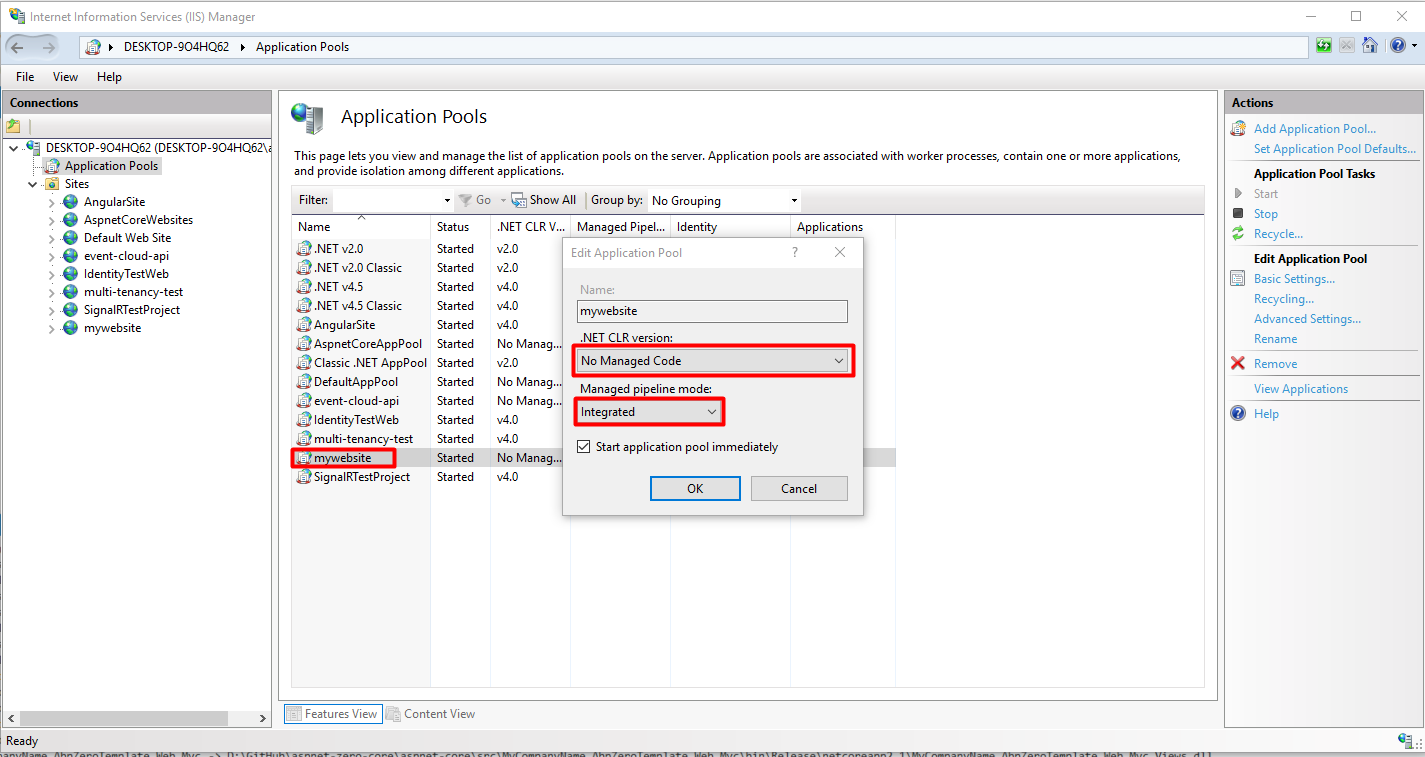- ASP.NET Tutorial
- ASP.NET Resources
Mar 15, 2010 I have my theme for each folder set in the web.config, but on design I have no access to the css or skins for that page unless I add them in the page directive, then upon rendering in html, the page shows 2 references to the same css file. Feb 15, 2007 In web.config, add the environmentConfiguration custom section. This is where you list your servers. In web.config, add the dev, test, prod, or whatever you want to call your environments. Make sure each environment section has a ConnectionStrings section in it. In Web.config, point the existing ConnectionStrings section to an external file. Create the external file with the correct code in it. Apr 23, 2012 actually the problem was the system crashes on postback since the configuration is different and the new database name i have was an invalid one.lol silly me.but tnx for the time in answering mate really appreciate it.

- Selected Reading
The behavior of an ASP.NET application is affected by different settings in the configuration files:

- machine.config
- web.config
The machine.config file contains default and the machine-specific value for all supported settings. The machine settings are controlled by the system administrator and applications are generally not given access to this file.
An application however, can override the default values by creating web.config files in its roots folder. The web.config file is a subset of the machine.config file.
If the application contains child directories, it can define a web.config file for each folder. Scope of each configuration file is determined in a hierarchical top-down manner.
Any web.config file can locally extend, restrict, or override any settings defined on the upper level.
Visual Studio generates a default web.config file for each project. An application can execute without a web.config file, however, you cannot debug an application without a web.config file.
The following figure shows the Solution Explorer for the sample example used in the web services tutorial:
In this application, there are two web.config files for two projects i.e., the web service and the web site calling the web service.
The web.config file has the configuration element as the root node. Information inside this element is grouped into two main areas: the configuration section-handler declaration area, and the configuration section settings area.
The following code snippet shows the basic syntax of a configuration file:
Configuration Section Handler declarations
The configuration section handlers are contained within the <configSections> tags. Each configuration handler specifies name of a configuration section, contained within the file, which provides some configuration data. It has the following basic syntax:
It has the following elements:
Clear - It removes all references to inherited sections and section groups.
Remove - It removes a reference to an inherited section and section group.
Section - It defines an association between a configuration section handler and a configuration element.
Section group - It defines an association between a configuration section handler and a configuration section.
Application Settings
The application settings allow storing application-wide name-value pairs for read-only access. For example, you can define a custom application setting as:
For example, you can also store the name of a book and its ISBN number:
Connection Strings
The connection strings show which database connection strings are available to the website. For example:
System.Web Element
The system.web element specifies the root element for the ASP.NET configuration section and contains configuration elements that configure ASP.NET Web applications and control how the applications behave.
It holds most of the configuration elements needed to be adjusted in common applications. The basic syntax for the element is as given:
The following table provides brief description of some of common sub elements of the system.web element:
AnonymousIdentification
This is required to identify users who are not authenticated when authorization is required.
Authentication
It configures the authentication support. The basic syntax is as given:
Authorization
It configures the authorization support. The basic syntax is as given:
Caching
It Configures the cache settings. The basic syntax is as given:
CustomErrors
It defines custom error messages. The basic syntax is as given:
Deployment
It defines configuration settings used for deployment. The basic syntax is as follows:
HostingEnvironment
It defines configuration settings for hosting environment. The basic syntax is as follows:
Identity
It configures the identity of the application. The basic syntax is as given:
Antares Auto-Tune Live AAX is a music plug-in that provides real-time pitch correction and auto-tune vocal effects. The AAX Native plug-in is designed to work with Pro Tools 10.3.8 or later (except Pro Tools SE and M-Powered Essential, which do not accept 3rd party plug-ins). Auto tune 8 aax free.
MachineKey
It configures keys to use for encryption and decryption of Forms authentication cookie data.
It also allows configuring a validation key that performs message authentication checks on view-state data and forms authentication tickets. The basic syntax is:
Web Config Test Dev C Asp Net Login
Membership
This configures parameters of managing and authenticating user accounts. The basic syntax is:
Pages
It provides page-specific configurations. The basic syntax is:
Profile
It configures user profile parameters. The basic syntax is:
RoleManager
It configures settings for user roles. The basic syntax is:
SecurityPolicy
It configures the security policy. The basic syntax is:
UrlMappings
It defines mappings to hide the original URL and provide a more user friendly URL. The basic syntax is:
Asp Net Web Config Connectionstrings
WebControls
Asp Net Web Service Example
It provides the name of shared location for client scripts. The basic syntax is:
WebServices
This configures the web services.